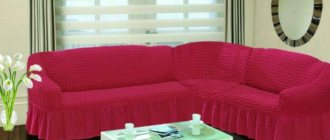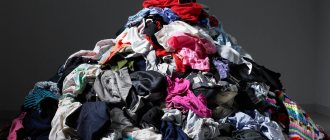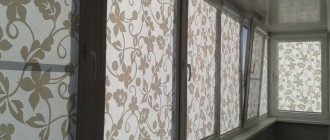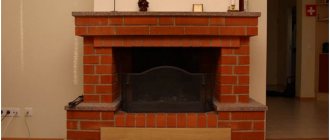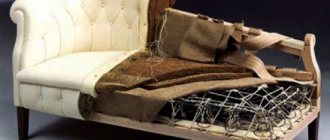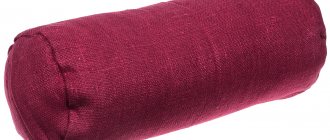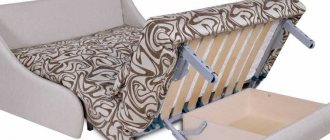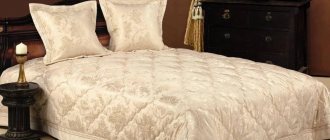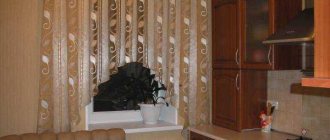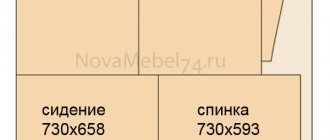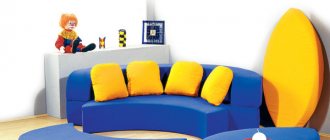The veil is part tradition and part necessity. With the help of covers, people try to maintain the appearance of furniture, and at the same time increase comfort. In the same way, they add color and light to the atmosphere, and arrange the room in the spirit of English or country style. The technology of sewing bedspreads is passed on by craftsmen from generation to generation, just like the designs on them. This is their special value. It is understood mainly by those who are somehow familiar with the manufacture of textiles. Covers protect sofas from pets and restless children, from scratches and stains. But for housewives, this is, first of all, an interesting process and an opportunity to make something big and valuable with your own hands. Colorful bedspreads on corner sofas, beds, and armchairs are a subtle design technique that requires good taste. Capes are used to cover furniture in living rooms, bedrooms and other living spaces.
Advantages and disadvantages of using bedspreads and covers
They protect furniture from dirt, give it a neater look and quickly hide clutter. These are just the direct benefits. Among other advantages, it is worth emphasizing the wide range of prices, variety of sizes of both factory-made and home-made products. Bedspreads and covers are usually wear-resistant, and caring for them takes about an hour a month. It is enough to clean it from dust once a week and wash it once a month. Bedspreads and covers keep their shape well and hide uneven furniture, as well as other imperfections. Capes can be created in any color scheme, and their material can be selected from natural raw materials.
Obvious disadvantages are poor compatibility with modern interiors and the high price of truly exclusive and high-quality options. It is worth noting that although stains “go away” from bedspreads relatively easily, thick and saturated liquids leave permanent marks.
Purpose of the product
A fabric cover for a corner sofa protects furniture from abrasions, stains, snags, pet hair, as well as other mechanical and chemical damage. The main task of such products is to preserve the presentable appearance of surfaces and their integrity, so it is best to select models made from high-quality dense materials.
Bedspreads warm and provide comfort. Sofas upholstered in natural or faux leather look luxurious, but in winter they are not very pleasant to sit on. To make the furniture more comfortable, as well as warm in every sense, you just need to cover it with a soft cape. The products also serve a decorative function. Provided they are harmoniously combined with the decor of the room, they instantly transform it. Fur ones look luxurious and expensive, silk ones look aristocratic and elegant, natural fabrics add home comfort to the room.
Modern corner sofas differ in size, shape, and design. It is often very difficult to find a bedspread that meets all the criteria. Therefore, not all users purchase ready-made products; many prefer to order tailoring from an atelier or create unique blankets with their own hands.
If you have furry pets in the house, a cover for upholstered furniture will become an indispensable accessory; it will protect the sofa from claws and fur.
Upholstery protection
Decorative function
Gives comfort
Choosing fabric for the bedspread
Material that is pleasant to the touch will do. Cotton is a classic. There is no point in describing all its advantages. Suffice it to say that it is lightweight, durable and breathable. Velvet, artificial and natural velor are suitable. Some people prefer synthetic fur. Anyone who knows how to work with this fabric will be pleased with the result. It is easy to wash and clean, but only with a limited set of products. The best protection against external influences on the bedspread itself and the sofa will be a microfiber cape. In addition, it holds its shape well. A prestigious option for any application is silk. The cost of expensive covers made from this material reaches the price of a simple corner sofa. A room in a youth or vintage style will be decorated with a jeans cover. You need to select a proportionate piece of fabric depending on the purpose: cover the entire corner sofa with one piece or two.
Tapestry fabric has equally good strength and decorative properties.
Materials
The main point that people pay attention to when choosing a cover for a corner sofa is what material it is made of. Based on the main characteristics of each type of material in accordance with consumer requests, the choice is determined.
Velours
The material has a velvet structure, but has a significantly lower price. The appearance may differ depending on the styling method: fluffy, smoothed, embossed, etc. Different types of raw materials are used for its production. Cotton and wool are great for covers.
The advantages of velor products for protecting upholstered furniture include:
- quite practical, as it is not difficult to care for;
- hypoallergenic and antistatic properties are inherent;
- If soiled, it can be washed.
The disadvantages include such points as relatively high cost and instability to mechanical stress. It can easily be damaged by pets with their claws. That is why you should not purchase it for a house where animals constantly live.
Flock
Excellent material for sofa covers. Flock is soft and delicate to the touch, but at the same time has high strength. It feels like velvet. Its composition is 35% natural fibers, 75% synthetic materials.
Material Features:
- no deformation. Able to maintain its shape for a long time during operation;
- Quite easy to care for;
- resistant to fading and has water-repellent properties;
- has antistatic properties, so it does not accumulate dust on the surface;
- the paint does not lose its shades, does not contain harmful substances, so it can be used for children's sofas.
Attention
The disadvantages include the fact that it may cause allergies in some users. Therefore, people suffering from this disease should pay attention to this material.
Microfiber
The next material that is ideal for sofa covers is microfiber. In its structure it resembles suede. It is highly valued for its qualities that other options cannot match.
Very durable material that can withstand long-term use. At the same time, the appearance does not deteriorate. Microfiber with Teflon impregnation is especially good, which provides the material with very high strength even with intensive use.
Microfiber impregnated with Teflon is not afraid of moisture, grease, or dirt. It can be used in children's rooms and living rooms. Even the presence of animals will not spoil its quality.
Cotton
A distinctive characteristic of this material is its naturalness. Therefore, environmental friendliness is his calling card. Because cotton is easy to dye, it is easy to create a colorful design. Accordingly, we are pleased with the wide variety of products.
The disadvantage is its fragility and shrinkage during washing. The service life is extended with the help of protective impregnation. It increases the product's resistance to fading. This fact is taken into account when choosing a cotton cover.
Cotton sofa covers are perfect for children's upholstered furniture. Their bright design will delight kids and ensure contact with safe material.
Jacquard
Quite a dense fabric with high strength indicators. Its composition includes both natural cotton and synthetic polyester, due to which the material acquires high resistance to deformation and stretching.
A distinctive feature of jacquard is its textured surface. It is able to give the product originality and solidity. It is resistant to the formation of various kinds of puffs and snags. It is almost impossible to break it. Based on this, he is not afraid of pets.
How to take measurements correctly
The corner sofa is mentally divided into rectangles. The backs, seats and armrests are measured, after which the results are summed up and the parameters needed for sewing are obtained. When ordering, you should ask for a larger quantity in order to have both stock and room for error. For beginners, taking measurements will be difficult, because in addition to the 3 main parts, you also need to get small ones. To avoid mistakes, you should use paper: draw a model of a corner sofa on it in detail. Or, print out a photo and put numbers on it. You should remember the need to maintain a pattern, be it stripes or images. Otherwise, the product will turn out unattractive. Any pattern will increase the fabric consumption by almost 2 times. Beginners may need to discard any patterns or prints on the material. In this case, you will still need to maintain a margin around the edges.
How to choose the right one
To ensure that the bedspread is durable and of high quality, you should pay attention to several important details when purchasing.
- First you need to measure the dimensions of the sofa. This is easier to do than it seems. You can use a regular tape measure and take measurements of the length, width and depth of the seat. Also, do not forget about the armrests and backrest. Then you need to add 15-20 cm to each of the measured parameters, and you will get the desired bedspread size. This algorithm applies to two-seater and three-seater sofas. You need to measure the corner sofa in the same way. The ideal option is a set of several bedspreads for each block of sofa and armchairs.
- It is important to consider the material of the bedspread. It is desirable that the sofa deck be made of durable, practical fabrics, for example, velor, microfiber.
- Decor and style are important. To ensure that neutral colors look impressive and do not get lost in the overall background of the interior, designers use braid, fringe, and embroidery for decoration. Also, sofa decks can be made using the patchwork technique. It has common features with the rustic style and country style. With the right choice of colors, you can create a unique, cozy room design. Divandecks for corner sofas come in a variety of colors with bright prints or plain ones, usually rectangular in shape or rounded at the edges. The choice depends on the preferences of the future owner and the interior of the apartment. It is worth focusing on the color of furniture, walls and curtains in the room.
Sofa bedspreads are most often secured with ties, elastic bands, and adhesive tapes. This allows the cape not to fall off, wrinkle, and always remain in perfect shape.
Calculation of the required amount of fabric
Add 1-1.5 cm to all sizes. If suddenly they turn out to be superfluous, then the benefit will be all the same - they are used to correct worn parts of the bedspread. After meticulous measurements of each detail, the indicators are transferred to graph paper, maintaining the cutting directions and choosing the optimal scale. All parameters are then displayed on the fabric: the fabric is placed on a smooth surface with the wrong side up. Markings are made with a bar of soap or chalk. Allowances of 0.7-1.5 cm are left for seams, hems, etc. The amount of fabric and its calculation for corner models is very different. In any case, it’s worth taking a reserve and adjusting these allowances during the fitting. It often happens that the deviation towards increase is too large. Then it is simply removed with scissors. The higher the accuracy required, the wider the allowances are made.
Shape and cut of the bedspread
The shapes of sofas tend to be rectangular or square, but they look like that only at first glance. Calculating the ideal proportions of a cape is almost impossible due to the fact that even in the production facilities themselves there are no exact templates for this type of furniture. Each sofa is upholstered individually. Thus, for a blanket on a corner sofa, it is important that it does not sit flush on the furniture. It's better to let it drive than to look like upholstery.
The pattern pieces come in approximately 5 different shapes. The front parts of the backrests correspond to rectangles with the lower side cut off. The lower parts and seats are made of one piece. The shape of the main parts of the armrests vaguely resembles a glove, only with smooth edges. The front parts of the armrests have the appearance of a candle. The back elements of the backrest are a narrow rectangle with one rounded corner. This is what the set of components looks like.
It’s not scary if the patterns don’t work out the first time - in the future you need to draw and cut more slowly, and the help of computer modeling programs won’t hurt either!
Method of fastening the bedspread
Due to the structural complexity of the corner sofa, they resort to additional fastenings for the fabric. The product will not slide on the upholstery or fall off the sofa if you use one of the following options:
- lacing;
- buttons;
- buttons;
- Velcro tapes;
- rubber bands.
Laces are used as a hidden fastening or as a decorative element. If you choose this option, then only with loops, otherwise, after the end gets into the textile tunnel, you will have to spend a lot of time and effort to get it back. And this is the best case scenario. Buttons are a tried and true classic. They have a simple operating principle and a long service life. Buttons are replaced quickly and easily. The buttons often come off, but they hold the cape in place very tightly. Plastic options fail less often. Velcro tape is a great anti-slip option. Retains its properties for several years. An elastic band is considered the best method of fastening, because then the bedspread can be quickly removed and put on without much effort.
Varieties
Modern bedspreads are distinguished by a wide variety, which allows you to choose the right model for any interior. They are classified according to the material of manufacture, method of attachment to the sofa, and size. Each option has its own characteristics.
Pros and cons of dolphin corner sofas, overview of the main characteristics
According to the material of manufacture
When choosing a suitable bedspread, it is necessary to take into account the characteristics of the fabrics. The appearance, practicality, and care rules depend on the characteristics of textiles. The most popular materials are:
- Fur. Brings comfort and warmth to the room, gives upholstered furniture additional volume. Natural and artificial options are pleasant to the touch and get less dirty compared to fabric. You cannot wash such a cape yourself, so from time to time you will have to use dry cleaning services.
- Terry fabric. A long-pile bedspread is made from artificial materials or cotton. The texture of the coating is as soft as fur and has an attractive shine. The products weigh a lot and cannot boast of durability.
- Tapestry. It is a dense fabric with a variety of textures - fancy patterns, ornaments, weaving. The material looks presentable, stylish, has a long service life, but is expensive.
- Satin, satin, silk. Elegant textiles are ideal to complement the bedroom interior. You can cover the sofa with such a cover in the heat, then the delicate surface will pleasantly cool the skin. Weightless, lightweight bedspreads come in a variety of colors and are affordable, however, their surface can be easily damaged.
- Velours. Delicate velvety fabric with excellent warming properties. Textiles are durable, in some cases they can provoke an allergic reaction.
- Plush. Fluffy fabrics with long pile are made from cotton and synthetic fibers. The products are easy to clean, dry quickly, and are inexpensive.
- Velvet. A noble material with a soft surface and exquisite shine. Such covers can completely transform the appearance of sofas, giving them elegance and a luxurious look; however, they do not serve the model for long.
- Microfiber. Popular material with a soft surface and simple structure. The fabrics last a long time and reliably protect the upholstery from wear, moisture, and dirt.
Characteristics and advantages of the Friheten sofa from Ikea, model range
An excellent alternative to bedspreads will be Euro-covers, which also effectively cope with maintaining the cleanliness and visual appeal of furniture. Elastic products are pleasant to the touch, made of cotton and polyester. The models are easy to wash, they retain their original shape for a long time, and unsightly creases and folds do not form on the surface.
Velvet
Plush
Atlas
Fur
Microfiber
Velours
Tapestry
Mahra
Silk
By mounting method
The bedspreads must be securely held on the surface of the corner sofa, not slip off the upholstery, and not bunch up, so as not to cause discomfort. Especially for this purpose, the capes are supplemented with convenient fixing elements:
- Rubber. Characterized by ease of use, best suited for models that do not need to be removed regularly.
- Velcro tape. This element is based on two parts. Hard ones are fixed to furniture, sticky ones are fixed to a cape. If you cover the sofa with such a blanket, the fastenings draped with fabric will be completely invisible.
- Buttons, buttons. The simplest option, the fastenings not only securely hold the cape, but also perform a decorative function.
- Lacing. Typically used on bedspreads that flow freely from the sofa. Lace, laces or satin ribbons are used as ties.
Thanks to the presence of fastening elements, using the blanket becomes as simple and convenient as possible. With them, you won’t have to specifically limit yourself in the use of furniture or adjust the cape once again.
Rubber
Velcro tape
Ties
Buttons
To size
Corner sofas are characterized by impressive dimensions and massiveness. When unfolded, the product parameters become even larger. Length can reach:
- 150 cm – for children’s models;
- 210 cm – for adult furniture.
Characteristics of anti-claw fabric for sofas, main varieties
The standard parameters are 380 x 200 cm. To select the correct bedspread for corner structures, you need to find out the exact dimensions of the furniture. First of all, measure the length of the base, then the corner part. After this, the width of the seat is determined, which may differ in different areas.
Another important parameter is the height of the backrest. On corner sofas, any types of capes look presentable. When choosing, be sure to take into account the presence or absence of armrests and built-in shelves. Owners of non-standard furniture should take a closer look at universal covers made of stretchy materials. Elastic fabrics perfectly cover the surface and fit perfectly.
Many models are decorated with a variety of decorative elements. These can be ribbons, frills, lace, ruffles, which bring a romantic atmosphere to the room. All additions should be harmoniously combined with the cape and the overall interior of the room.
Many bedspreads are complemented by practical pockets, where it is convenient to put newspapers or a TV remote control.
A sofa covered with a beautiful blanket will become the central element of a living room, bedroom or nursery. Indispensable accessories protect corner models from damage, dirt, premature wear and other negative factors. Thanks to the variety of colors, materials, and design, the cape allows you to quickly refresh your interior. When choosing, you need to pay attention to the method of attaching the cover, the parameters of the furniture, as well as the brand. Products from trusted companies are of high quality and will last at least three years.
Bedspread style and decor
The decorative aspect includes 4 nuances. Firstly, this is the volume of the product. It is attached using a simple foam pad on the wrong side. Then it will be more comfortable to sit. The second point is the density of the pattern. A dense workpiece is stitched twice and with thick threads. The appearance of the product is also improved with bows and ribbons. Additional decor is usually pillows and cushions.
Styles for decorating bedspreads:
- Oriental;
- English;
- loft;
- country;
- patchwork.
To convey Eastern culture, many ornaments are used, while avoiding images of animals and people. A cape is suitable for an interior that needs emphasized status. The laconic and elegant English style brings together the best of what has become a classic. A brown cape with a regular white pattern will be just right. The loft setting is emphasized with a thick monotonous product or a tapestry cape. For the country style, simple home models with a slight carelessness in execution will do. For the sake of patchwork style, it is not necessary to sew a bedspread from scraps; you can simply choose the appropriate color.
Master class on sewing bedspreads for a corner sofa
Making a bedspread for a sofa involves simple steps, but the difficulty is not to miss anything and to follow the step-by-step algorithm. First, we inspect the furniture: we study its shape, dimensions, individual elements and their parameters. From this information we can imagine how much fabric will be needed. At the same time, we decide on the material. This stage is difficult in the sense that you immediately need to decide whether the design/pattern will be on the cape or not. If yes, additional amount of matter will be needed. On special paper, we first draw the edges, and then cut out patterns (patterns) to replicate the constituent elements of the sofa. At this point, look at the scaled drawing and check the shape and size. Then we transfer the parameters to the fabric. We process the material for the bedspread, and after that we can move on to stitching the parts. We finish the almost finished cape with fittings and decorate it.
Making your own sketch and pattern
First of all, we study the dimensions of the furniture. We measure the sofa from the floor to the top, as well as along the floor covering. We sum up all the distances and multiply by 2 in order to approximately know the required length of the fabric, or rather, its minimum. Counting will give you an idea of the size of the patterns. Then we take white material, for example, tracing paper, and place it on the corner sofa. To make sure that its dimensions are sufficient to accommodate the contours. In the future, we will roughly understand the required dimensions for the fabric itself. Already at this time, you can draw a sketch on plain paper with all the sizes and exact proportions of the elements. So, we remove the tracing paper and transfer the size and shape parameters from the sketch. We do everything by hand, so we use a ruler. A few broken patterns are not a problem. We cut out the necessary shapes, sign them and number the same ones.
How to correctly transfer a pattern to fabric
The transfer includes 6 stages. First, we place the pattern on the fabric in one way or another, and smooth the material itself. The sample is then secured with fixing weights. We transfer its edges to the fabric. We use disappearing tailor's chalk. Then we move on to cutting the fabric, and when the stage is completed, we transfer the control marks to the material. We duplicate the contours on paired and symmetrical parts.
During the process, the craftsmen use carbon paper. In order to achieve perfect symmetry of identical parts. It is placed under the fabric, exactly under the place where the pattern is located. A wheel with a smooth or jagged edge is used to move along the fabric in places where there are allowances and borders. This is how the lines are pushed. The coloring pigment leaves a mark on the fabric - a shape that perfectly follows the outline of the pattern. Craftsmen protect the bedspread material from paint and dents using simple solutions:
- Cardboard placed under the wheels.
- Folding the fabric in half, facing inward, so that the dye remains on the inner surface.
Sewing and finishing of edges
You will need a sewing machine, pins, a tailor's yardstick, scissors, and thread. So, we fold the patterns face inward and baste them with temporary stitches. We try on the received parts on the sofa. If the result is acceptable, then we begin to sew the seams. We bend all the edges and sew them together again. Check the evenness of the bottom. After this we sew the product. It is difficult to guess the time costs. If the cover is designed to cover the entire sofa, including the backrest, then it will actually be three-dimensional. Because of this structure of the bedspread, the material has to be moved under the needle. We try on the pre-finished product on the sofa again. If it is not pressed too hard, then everything goes as it should. We connect all the remaining edges and move on to design and decor. We install fasteners or ties in pre-designated places. Then we decorate the cape with ribbons, pockets or other elements.
Models of European covers for corner sofas
Several coating options with different textures are offered.
Microfiber . "Vanilla"
A single-color cover made of microfiber is designed for decorating corner sofas without armrests. It weighs 2.5 kg. The covering can stretch from 3800 to 5500 mm. The product is cared for in an automatic washing machine at a temperature of 30...40 degrees Celsius.
Microfiber. "Vanilla"
Jacquard. "Waves
«
The fabric, which has high strength, is made in calm, soft colors. The volumetric effect of the pattern gives the product originality. The cover can be used to decorate furniture in classic, Baroque or Art Nouveau style interiors. It is also suitable for lovers of ethnic motifs. Material composition: cotton (80%), polyester (15%) and elastane (5%). Fabric stretch: from 3800 to 5300 mm.
Jacquard cover
Fantasy . "Venice"
Light airy covers, decorated with a floral print and a frill about 25 cm long, add a romantic touch to the interior. The fabric is made from cotton and polyester (in equal proportions), stretches from 3800 to 5300 mm. The coating can be washed at a temperature not exceeding 30 degrees. Spin is not set (as a last resort, you can use the mode at 400 rpm). You should not iron the cover (you can damage the threads), you can only steam the frills.
Case in brown tones with a pattern
"Alba"
For the production of covers, fabrics of muted shades are used, emphasizing the cozy atmosphere in the room. The texture of the material resembles hand knitting. The textile composition includes cotton (60%), polyester (35%) and elastane (5%) fibers. Cotton provides softness to the cover, and synthetic threads increase strength and stretchability (up to 5.5 m).
White cover for corner sofa
“Vista. Grace"
The model will harmoniously fit into both Provence and Empire style interiors. The material is made from 50% cotton fibers and 50% polyester. Along the back, the fabric can stretch from 3800 mm to 5500 mm. Textiles are washed at a temperature of 30...40 degrees Celsius.
Case with floral print
Prices for euro covers for corner sofas
Euro-covers for a corner sofa
Features of sewing leather cases
The material for the leather case is not swept away or pinned; instead, clips are used. A special foot and needle are used and sewn with medium or large stitches. Universal threads of medium thickness made of synthetic material are suitable for this work. For beginners, it is better to take especially durable ones. Beginners should also not choose a skein with a color that contrasts with the skin, but only in one tone. The skin is fastened with clamps aligning the recesses and corners. In difficult moments, when the edge of the cover is being sewn off and a couple of layers need to be stitched, the movements are made as slowly and carefully as possible. The sharp end of the needle is moistened with baby oil. It is applied to the instrument with a cotton swab. As for the stitch size, an interval of 4.5-5 mm is used for stitching, and 3-3.5 mm for stitching. In areas of the leather case that are not visible from view, several small holes are made to improve air circulation.
DIY sofa blanket made from old jeans
You should choose unwanted jeans, but use only those areas of clothing that are well preserved and practically not frayed. The finished craft will have an attractive appearance if the thickness and density of the fabrics from different trousers are approximately the same. The color may vary. For sewing, choose one of four techniques:
- Quick squares;
- Watercolor;
- By stripes.
The first technique will be suitable for beginners. The principle is to use two types of denim to create the first shape from two rectangles. Then they take a rectangle of the third fabric and sew it with the long side to the narrow part of the finished element, which completely matches in size. This is how several sleeves are made, which are then combined into compositions. The watercolor technique means combining pieces into a thoughtful sequence of colors. The strip method means a loose arrangement of long fabric pieces.
Pros you can't argue with
Take a look at the photos of sofa decks to evaluate each of their advantages for yourself. Beautiful products do an excellent job of aesthetic function. They are used to update the interior or complement existing decor.
For cases, they use all the richness of the rainbow palette of colors. Fashionable designs and shades allow you to make your interior stylish. The room will become more comfortable and convenient. To sew sofa decks, you can use natural materials or synthetic fabrics.
According to professional stylists, furniture covers add individuality to the interior, unifying the atmosphere of the room. Fur models look chic in a wooden house. For a city apartment, a more presentable option is satin sofa decks. They are durable and practically do not get dirty.
You can sew several sets of sofa decks to change them. Each such replacement guarantees the creation of a new look. Items can be taken on and off frequently.
If you want a change of scenery, add sofa decks and armchairs made of material in the same tone as the curtains. Multi-colored covers are more suitable for friendly gatherings.
Ottomans, sofa cushions and small rugs serve as harmonious additions. A few accessories made from textiles will help you create a presentable apartment without costly renovations.
How to care for covers and bedspreads
Bedspreads and covers are washed approximately once a month - this is all basic care. Usually the manual option is chosen. Contamination is removed with a stain remover: separately and as quickly as possible. They also use machine wash at a water temperature of no higher than 30 °C and on a delicate cycle, regardless of the material. The bedspreads can withstand dry cleaning. Once a week, all dust is removed from them, and periodically they are combed with a brush to straighten the fibers, eliminate parasites and remove small particles of dirt and food. Thick capes are aired at least 2 times a year. They are taken out into the dryer, onto the balcony or street. The permissible ironing temperature is limited to 100 degrees, both with and without steam. To prevent foreign odors from emanating from the bedspread, it should be stored in a ventilated room on relatively free shelves.
